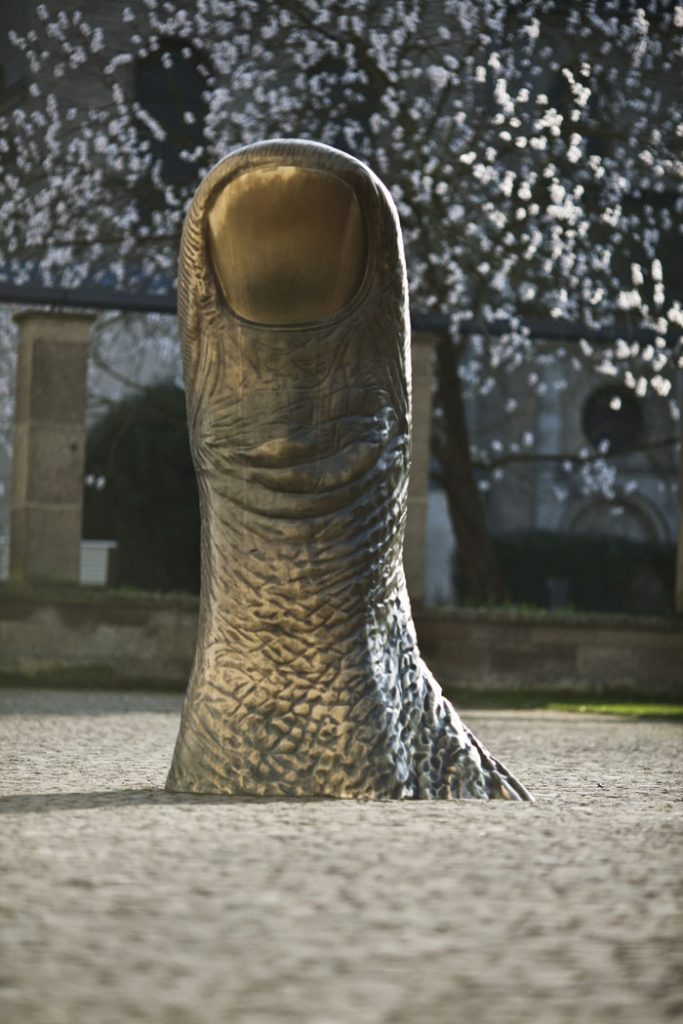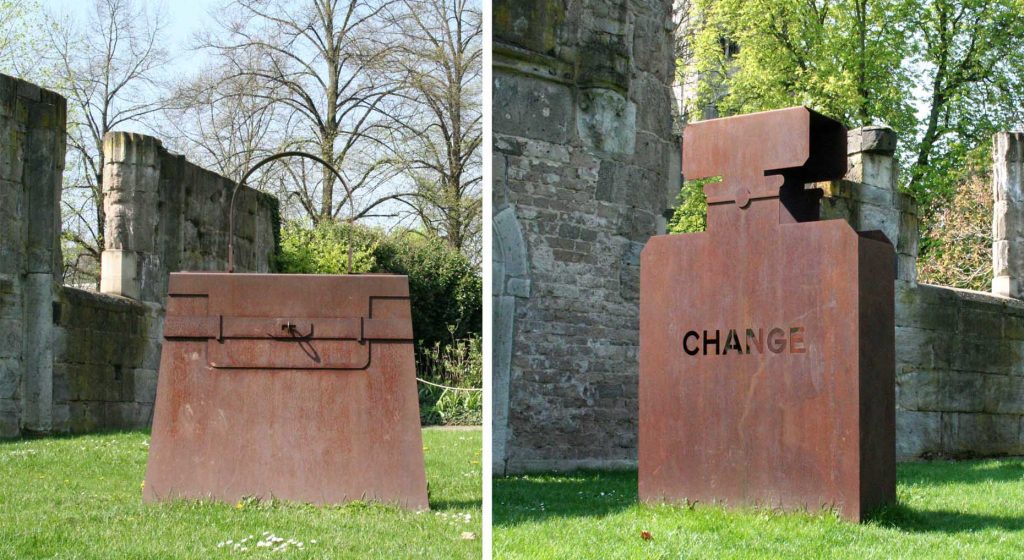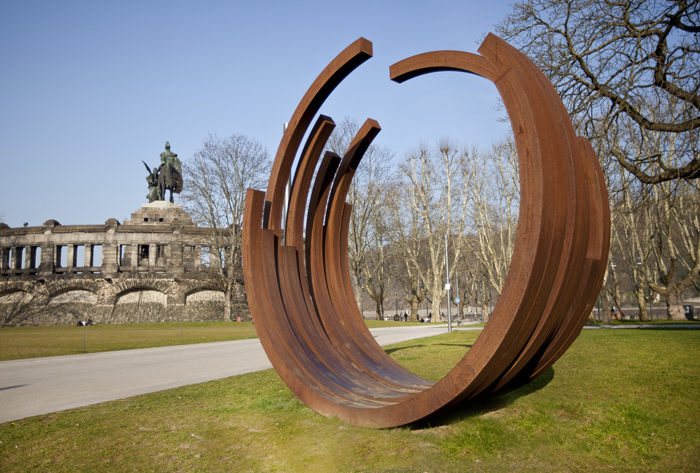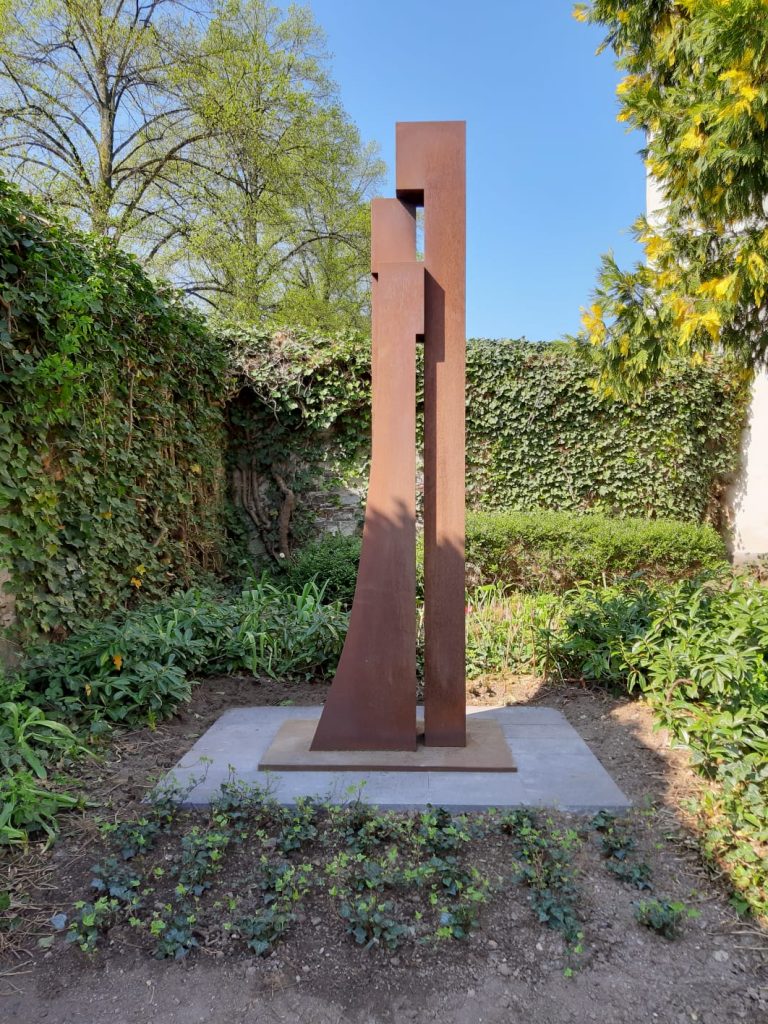Outdoor Sculptures
In addition to its exhibition rooms, the Ludwig Museum uses the adjacent park as a permanent exhibition space for striking sculptures from the collection. Here, too, there is plenty to discover and enjoy.
The Blumenhof is located not far from the culturally rich site at the confluence of the Rhine and Moselle rivers and spreads out around the Basilica of St. Kastor. The grounds are divided into three areas that were redesigned for BUGA 2011: The Ludwig Museum courtyard in the Deutschherrenhaus with the former chapel, the “Sculpture Park” – a place where art and sculptures are presented in the context of the museum – and the “Blossom Courtyard” between the Ludwig Museum and the Basilica of St. Kastor. As one of the most contemplative places in Koblenz, the southern courtyard of the Kastor Church picks up on the medieval theme of the “hortus conclusus” (Latin for closed garden). Symbolic of the Blessed Virgin Mary, the “Garden of Paradise” was designed as a quiet place enclosed by hedges with selected plants from the symbolism of Mary around a water basin that symbolizes purity.
Individual visitors and even entire groups regularly have their pictures taken in front of César’s bronze sculpture “Le Pouce/The Thumb,” whose twelve-meter-high counterpart stands in the modern Parisian high-rise district of La Défense. The installation “Dépôt de mémoire. Stätte des Vergessens und Erinnerns” by Anne and Patrick Poirier and HD Schrader’s tree installation “Cubes and Trees” offer a favorable view of the Kaiserdenkmal at the Deutsches Eck and the course of the Rhine from the museum terrace. From here, the visitor has a wonderful view of the Ehrenbreitstein Fortress and the legendary fireworks at “Rhein in Flammen” (“Rhine in Flames”).
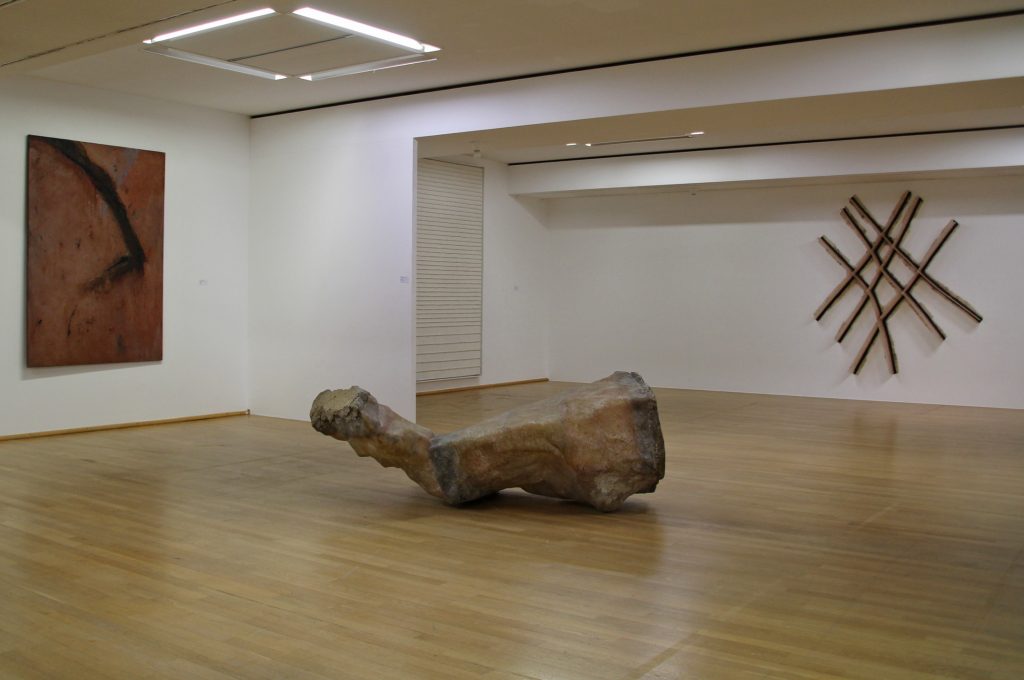
César, Le pouce (1965)
The thumb, which was cast in bronze in several editions in different sizes, is based on an original in orange-red polyester of 41 cm in height from 1965. The occasion for this work, according to César, was an invitation from his gallerist Claude Bernard to participate in an exhibition on the theme of “hand”. The authentic thumb of César himself was molded into the present sculpture. Associations with the famous thumb gesture of the Roman general Gaius Julius Cesar are, according to the artist, quite desirable. Versions of the thumb made of different materials in various sizes were set up at documenta IV in Kassel in 1968. The Koblenz thumb was cast by Bocquel in the early 1970s for the fourth bronze version. This version was followed by two more individual pieces, a six-meter-high thumb for the city of Seoul and a twelve-meter-high specimen for the La Défense office district in Paris.
Heiner Meyer, »Garden Kelly« (2013) and »Change« (2014)
The two sculptures made of Corten steel by the international artist Heiner Meyer take up the thematic language of Pop Art: Provocation and ironization of everyday objects through oversize. His motifs, however, are not limited to simple canned goods, as with Andy Warhol, but luxury goods such as handbags and other fashion items, as well as celebrities from Hollywood. One of these is the “Kelly Bag” by Hermés, made famous by Grace Kelly. The classic orange of this handbag finds expression in the rusty surface of the sculpture. Next to it is a Chanel No. 5 bottle with the “Change” embossed on it.
Bernar Venet , 24.5° Arc x 5 et 225° Arc x 5 (2011)
The sculpture 224.5° Arc x 5 et 225° Arc x 5 by Frenchman Bernar Venet has been installed in the immediate vicinity of the Ludwig Museum Koblenz since 2011. The monumental sculpture, made of steel ingots, stands between the Ludwig Museum and the Kaiser Wilhelm Monument. Bernar Venet’s works reveal his fascination with coarse materials; in his early days, for example, he made paintings from tar. These coarse materials should remain visible in the final result: “I am interested in preserving in my sculptures the natural energy of their anatomical mass, their relation to heaviness, in respecting what constitutes their qualities: the difference, the identity.”(Perlein, Gilbert: Conversation with Bernar Venet. In: Bernar Venet. Rètrospective. 1963-1993. Wilhelm Hack Museum, Ludwigshafen am Rhein 1993. p. 48.)
Anne und Patrick Poirier, Dépôt de mémoire (1992)
The outdoor sculpture by the French artist couple Anne and Patrick Poirier understands itself in its antique form as a reference to the historical sites of the Deutsches Eck and the Kaiserdenkmal. But it also corresponds to Anne and Patrick Poirier’s artistic concept of using imagined archaeological sites and finds to perform a new, very poetic dimension of historical memory and contemporary development work. Using large marble blocks and ashlars, the Poiriers stage a place where history seems to have already taken place, transmitted by means of stone relics. In Roman letters there are notations such as “Words are Shadows”, “Darkness”, Amnesia”, Mnemosyne”, “Oculus Memoriae”. Remembering and forgetting are opposed to each other. The fact that Anne and Patrick Poirier want their own production to be closely anchored in mythology is emphasized above all by the word “Mnemosyne,” with which they refer to the Greek goddess of memory. Moreover, the Poiriers’ production mentally builds a bridge to the Romans on the Rhine and Moselle, to the roots of Western culture in classical antiquity. It thus transfers the most diverse levels of history into a new time dimension of the present.
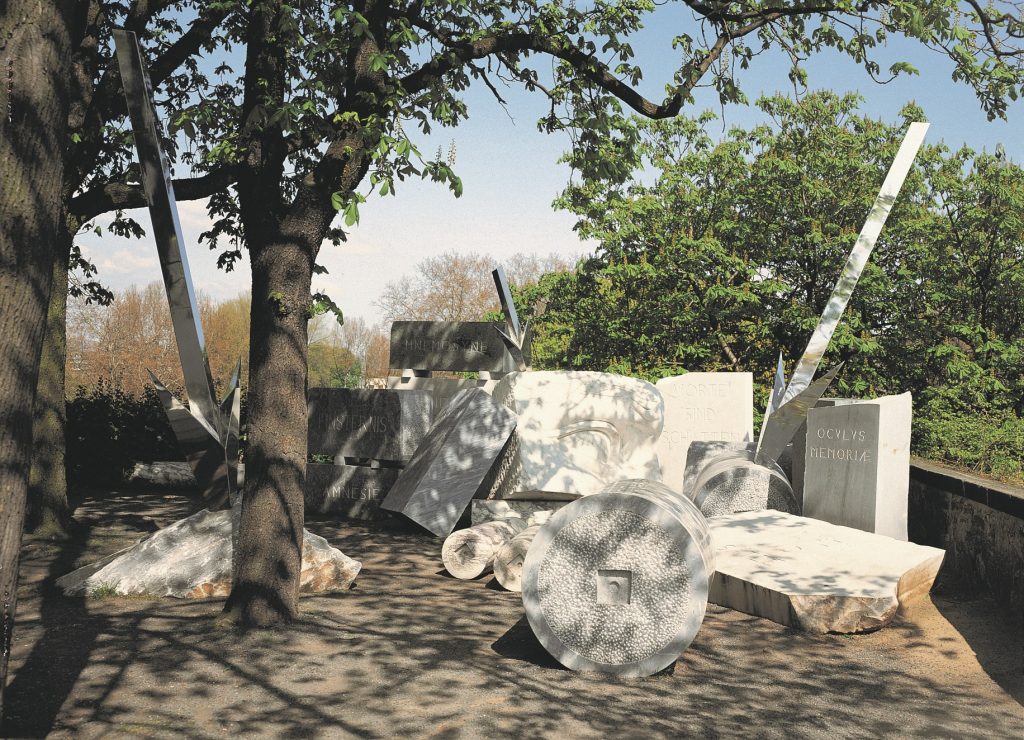
Martine Andernach, The Three Graces (2011)
In a shady spot in the courtyard in front of the Deutschherrenhaus, right next to the entrance to the Blumenhof, “The Three Graces” have been performing their dance since spring 2020. The sculpture was already set up in the garden of the Basilica of St. Kastor for the Federal Garden Show in 2011.
With this group of figures, Martine Andernach (*1948, Rang du Fliers, France) picks up on a popular pictorial motif from Roman mythology – as an example, we refer to Sandro Boticelli’s world-famous painting. Andernach reduces the three figures, which in art are often depicted standing or dancing in a circle, to simple, unadorned bodies that nevertheless establish a reference to human physiognomy. Through the juxtaposition of straight, almost rigid lines and curved forms, Andernach simultaneously gives the three graces grace and reproduces their dancing movement. The figures’ heads are turned toward each other, ready for them to whisper together in their shadowy hiding place.

